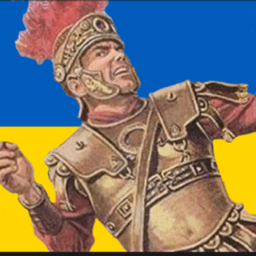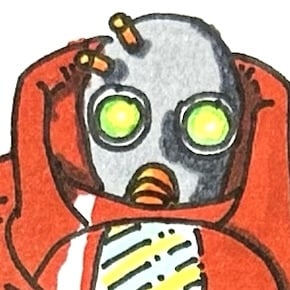Edit Eh it wasn’t turn based, really. Also I get that this is a meme, I just feel like rambling.
The older combat was still rooted in set piece maneuvers, and without smokeless powder, visibility was a huge issue. keeping an eye on your units (as a commander) and your peers (as a lower leader) was critical.
Also, cavalry was still a thing, and if your units were dispersed, it was very easy to get owned by roving cavalry.
Also the rate of fire, and functional accuracy was something that took lots of training then. They weren’t waiting for the other guys turn, they were considering how fast their troops could load, and when they can use their volley to the greatest advantage. You didn’t want to be halfway through a reload command when a charging unit gets on top of you. So sure, sometimes they would reserve their shot instead of firing that moment… But it was a gamble that:
- The enemy was shooting too early, and would have bad accuracy / impact.
- The enemy might charge right after shooting, so reserving your shot meant you could blast them when they get near.
- Maybe cavalry or another high risk enemy unit is “around” and you think you shouldn’t be caught with your pants down.
These are random ramblings, not a complete coverage of the concerns.
Source: nothing.
Source: nothing.
According to my study of the historical fiction series Sharpe’s Rifles, I concur.
It’s kinda a ridiculous series, basically about a British super soldier in the Napoleonic war. However, the author was obsessive about the environment and tactics being historically accurate. It’s a fun read if you like historical military fiction.
Haven’t read the books but in the series Sharpe basically survives through sheer dumb luck, but in the narrative it’s presented as him being some kind of super soldier.
On the other hand Sean Bean survives for a change
In the books it’s kinda a mix of dumb luck and Sharpe being the equivalent of a British Terminator, who does nothing but kill and sling dick across Europe and India.
If I remember correctly, among other normally mortal wounds he gets shot in the dome twice throughout the series and lives.
The story kinda jumps the shark a bit here and there, but the descriptions about the military history like logistics and tactics are pretty great in all the books.
Ah, sure bullets were slower back then…
in the series Sharpe
Multiple copies are on youtube, btw, e.g.:
[Long, overly serious rant about the meaning of the Fallout monologue, and how it applied to humanity’s inherent violence rather than the specific means]
Genuine question. How big of a problem is friendly fire? I know people that have gone into the military, and I wouldn’t wanna be bunched up like that while they are holding guns
From the same unit? Not very large to my knowledge. Everyone is setting up and firing at the same time, and at the same target(s), so there’s less of a ‘panic moment’ (at least insofar as aiming and firing is concerned), and you’re close enough that your musket would be hard to get into position to shoot the guy directly in front of you.
From other units? MASSIVE. In Gettysburg in the US Civil War (admittedly a bit after the Napoleonic-era Brits there) there were numerous incidents in which soldiers from the same side fired on each other because of uniform misidentification.
That’s part of the reason they are bunched up like that.
Although, they started in formations like that not so people wouldn’t shoot each-other, but so that all the spears were pointed in the right direction.
But, you take the basic spear formation, switch to guns, and you don’t have to make too many modifications (especially since the early guns were a lot like spears, they were very long, very solid, and had a bayonet on the end). The line infantry tactics did have people shoulder-to-shoulder, but the lines were only between 2-4 soldiers deep. You were always shooting perpendicular to the line, so even though everybody’s all bunched up, nobody except the enemy is on the other side of the barrel.
If everybody’s all spread out, the odds of a friendly fire incident are higher. If everybody is all bunched up in straight lines, all you have to worry about is the one or two guys in front of you. And, the end of your barrel goes past their positions anyhow.
I hope this doesn’t become a tough read. Damn my morbid curiosity
Edit:
Narrator: It did
It can be an issue. There’s a lot of moving pieces on the modern battlefield. You have some general rules to avoid it but there’s no guarantee.
You have to DIE LIKE A MAN
The movie ‘Waterloo’ with Rod Steiger was made back before CGI.
The Soviet Red Army trained over 15,000 troops in authentic tactics [cavalry, artillery, and infantry] and built the battle site from historic records.
I guess it boils down to magazine reloading making prone firing viable, especially in coordinated firing.
Nearly, the technological development that made line infantry tactics essentially obsolete was breach loading, because muzzle loading is rather hard to do in a prone position. Breach loaders already used pre-made ammunition cartridges in most cases, but magazines (especially non-internal ones) were a later development. Nonetheless they already made reloading much easier and also much faster than muzzle loading.
Rifled barrels giving increased range, gun powder that doesn’t block vision by creating big clouds, and ammunition cartridges/needle guns played a role as well. But breach loading made the biggest difference to infantry tactics.
Advances in artillery range and accuracy also made line tactics much more dangerous after a certain point. However some more conservative commanders still used line infantry related tactics like bayonet charges until well after the advent of machine guns in the first world war.
Even further back, about 20 years before breech loaders. By the end of the American Civil War both sides were firing from the prone or kneeling, and any cover they could find. It was always possible to reload muzzles from the prone, it just didn’t make any sense with smoothbore muskets. Rifles increased accuracy so much it became a problem to reload in the open.






